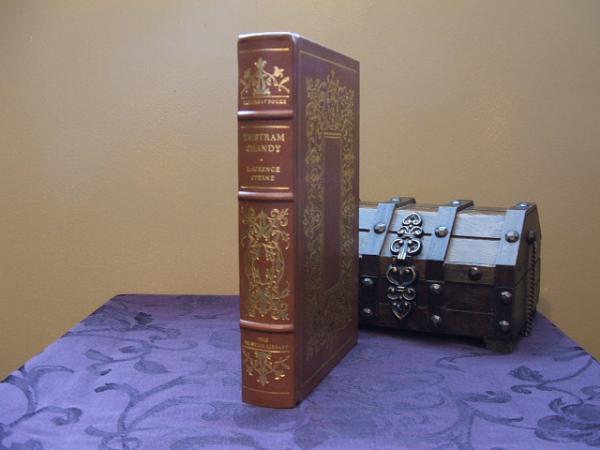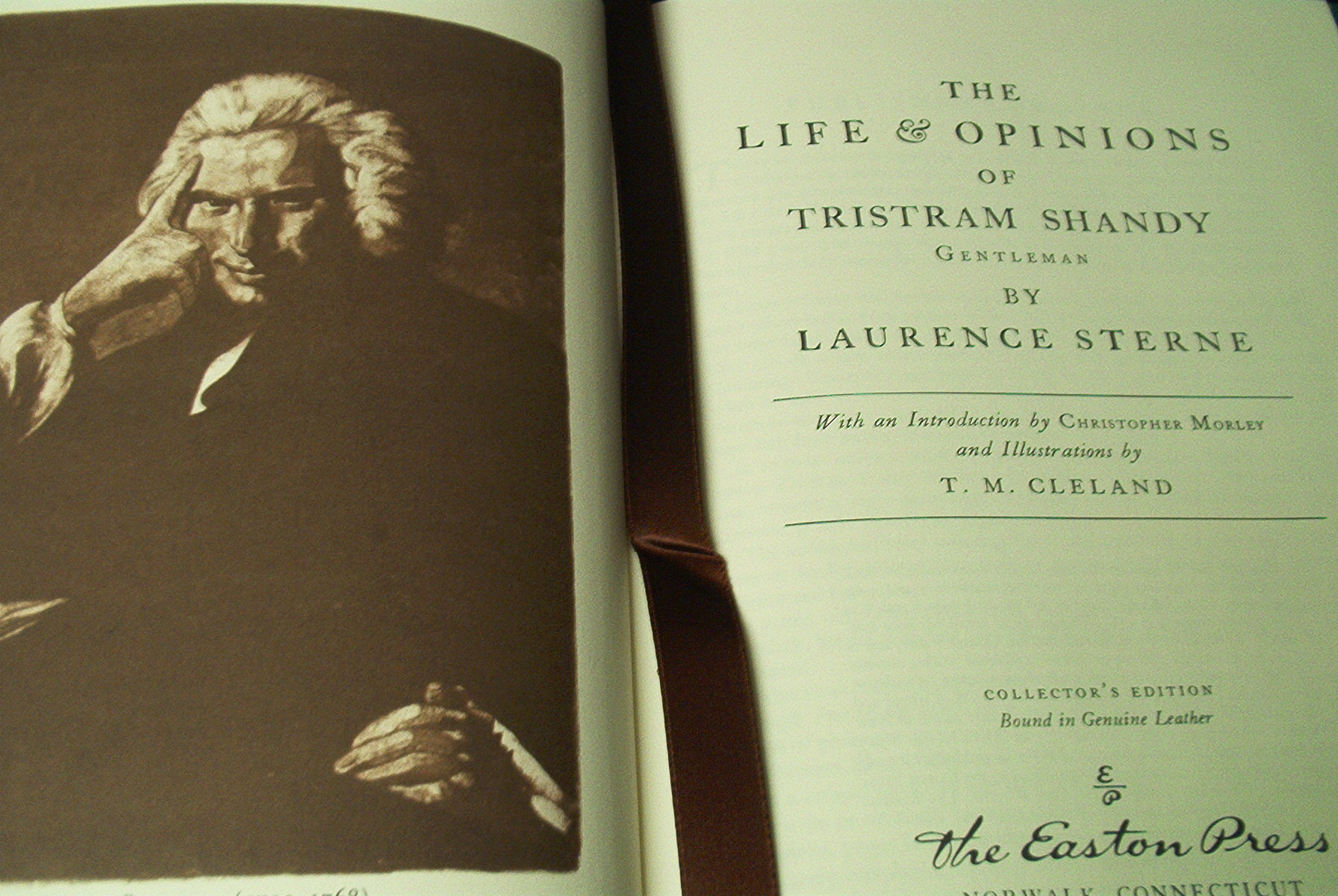Easton Press Laurence Sterne books
The Life & Opinions of Tristram Shandy - 100 Greatest Books Ever Written - 1980Franklin Library Laurence Sterne books
The Life & Opinions of Tristram Shandy - 100 Greatest Books of All Time - 1980
The Life & Opinions of Tristram Shandy - Great Books of the Western World - 1983
Laurence Sterne biography
Laurence Sterne, a renowned English novelist and clergyman, was born on November 24, 1713, in Clonmel, County Tipperary, Ireland. His father, Roger Sterne, was an army officer, and his mother, Agnes, hailed from a prominent Anglo-Irish family. The family's frequent relocations due to Roger's military career exposed Laurence to various cultures and landscapes, experiences that would later influence his writing. Sterne received his early education at Hipperholme Grammar School in Yorkshire, England, before attending Jesus College, Cambridge, where he excelled in languages and classical studies. After completing his studies, he followed his father's footsteps into the military but soon abandoned that career path to pursue his passion for literature and theology.
In 1738, Sterne was ordained as a deacon in the Church of England and later became a priest. He held various ecclesiastical positions, including serving as a curate in Yorkshire. Despite his clerical duties, Sterne found time to write and published several sermons and pamphlets on religious and moral themes. However, Sterne's true literary breakthrough came with the publication of his comic novel, The Life and Opinions of Tristram Shandy, Gentleman, which first appeared in installments between 1759 and 1767. This groundbreaking work defied conventional narrative structures, employing digressions, metafictional elements, and unconventional typography to satirize contemporary literary and social norms. Tristram Shandy earned Sterne widespread acclaim and established him as a leading figure in English literature. Following the success of Tristram Shandy, Sterne published the sentimental novel A Sentimental Journey Through France and Italy in 1768. This work, which chronicles the whimsical travels of a fictional narrator named Yorick, further showcased Sterne's innovative narrative techniques and humanistic sensibilities.
Sterne's literary career was tragically cut short when he succumbed to tuberculosis on March 18, 1768, in London, at the age of 54. Despite his relatively brief life, Sterne left an indelible mark on English literature, influencing subsequent generations of writers with his wit, humor, and inventive storytelling techniques. His works continue to be celebrated for their experimentalism, emotional depth, and keen observations of human nature. Laurence Sterne remains a towering figure in the canon of English literature, revered for his contributions to the novel as an art form.
The Life and Opinions of Tristram Shandy, Gentleman
The Life and Opinions of Tristram Shandy, Gentleman stands as one of the most unconventional and influential novels in English literature. Its author, Laurence Sterne, penned this groundbreaking work over a span of nearly a decade, with the first volumes appearing in 1759 and the final ones in 1767. Set against the backdrop of 18th-century England, Tristram Shandy defies traditional narrative conventions, presenting itself as a meandering and digressive account of its titular character's life. Tristram Shandy, the supposed narrator, continually veers off on tangents, offering humorous anecdotes, philosophical musings, and absurd digressions that often have little to do with the main plot.The novel's structure is highly experimental, incorporating elements such as blank pages, marbled pages, and unconventional punctuation to mirror the chaotic and unpredictable nature of life itself. Sterne employs a fragmented narrative style, jumping back and forth in time and interrupting the main storyline with seemingly irrelevant anecdotes and observations. At its core, Tristram Shandy is a satire of 18th-century literature and society, poking fun at various cultural and intellectual conventions of the time. Sterne uses humor, irony, and wit to lampoon everything from the pomposity of scholars and the pretensions of the aristocracy to the absurdities of medical practices and the limitations of language itself.
Despite its fragmented structure and seemingly haphazard narrative, Tristram Shandy is a deeply philosophical work, exploring themes such as identity, fate, mortality, and the nature of storytelling itself. Through his protagonist's meandering reflections and digressions, Sterne invites readers to ponder the complexities of human existence and the inherent absurdity of attempting to impose order and meaning on life. Tristram Shandy was met with both praise and controversy upon its publication, with some critics lauding its originality and wit, while others criticized its perceived lack of coherence and structure. Nevertheless, the novel quickly became a literary sensation, captivating readers with its bold experimentation and irreverent humor. Over the centuries, The Life and Opinions of Tristram Shandy, Gentleman has continued to fascinate and inspire readers and writers alike. Its influence can be seen in the works of authors such as James Joyce, Virginia Woolf, and Salman Rushdie, who have all praised Sterne's innovative approach to storytelling and his enduring relevance in the literary canon. Today, Tristram Shandy remains a timeless masterpiece, celebrated for its daring experimentation and its profound insights into the human condition.


Comments
Post a Comment
Share your best book review and recommendation